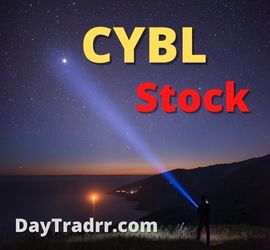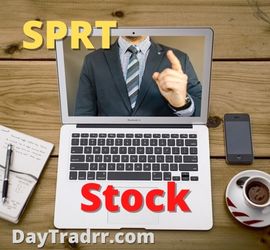What are Marketable Securities
 Marketable securities are liquid financial instruments. They can be quickly converted into cash at a reasonable price. The liquidity of marketable securities comes from the fact that the maturities tend to be less than one year. Also, the rates at which they can be bought or sold have little effect on prices. Converting or liquidating these investments into cash is much easier than is the case with longer-term securities. However, short-term liquid securities are classified differently when it comes to their accounting. Accounting is based on the purpose for which the securities are bought.
Marketable securities are liquid financial instruments. They can be quickly converted into cash at a reasonable price. The liquidity of marketable securities comes from the fact that the maturities tend to be less than one year. Also, the rates at which they can be bought or sold have little effect on prices. Converting or liquidating these investments into cash is much easier than is the case with longer-term securities. However, short-term liquid securities are classified differently when it comes to their accounting. Accounting is based on the purpose for which the securities are bought.
Briefly, marketable securities are assets that can be quickly converted to cash. These short-term securities can be bought or sold on a public stock exchange or a public bond exchange. They tend to mature in a year or less and can be either debt or equity. Examples of marketable securities include common stock, Treasury bills, and money market instruments, among others. (Source: investopedia.com)
Marketable Securities – A Deeper Look
Businesses typically hold cash in their reserves to prepare for situations in which they may need to act swiftly. Things like taking advantage of an acquisition opportunity that comes up or making unexpected payments. However, holding on to all the cash in its coffers presents no opportunity to earn interest. Therefore, a business will invest a portion of the cash in short-term liquid securities. This way, instead of having cash sit idly, the company can earn returns on it. If a sudden need for cash emerges, the company can easily liquidate these securities. Examples of short-term investment products are a group of assets categorized as marketable securities.
Marketable securities are unrestricted financial instruments that can be bought or sold on a public stock or bond exchange. These securities are classified as either marketable equity security or marketable debt security. Another requirement for this class of assets includes having a strong secondary market that can facilitate quick buy and sell transactions. Also, having a secondary market that provides accurate price quotes for investors. Unfortunately, the return on these types of securities is rather low. But, the advantage is that marketable securities are highly liquid and are considered safe investments.
Examples of marketable securities include common stock, commercial paper, banker’s acceptances, Treasury bills, and money market instruments. (Source: ibid)
Marketable Securities are Categorized by Purpose
There are three different ways marketable securities can be categorized by an investor. Their intended purpose determines how they are handled from an accounting perspective.
Trading Securities
These securities are a means to generate short-term profit and are generally held for less than one year. They are listed at fair value on a balance sheet. Any gains or losses made during the holding period are also recorded. Temporary fluctuations in market value like unrealized gains or losses are recorded on an income statement.
Held to Maturity
These marketable securities are held by companies until they reach their maturity date. If that date is within one year of the purchase date, they are considered short-term investments. Therefore, they fall under current assets. If the date exceeds one year from the purchase date, they are considered long-term investments and are non-current assets. These securities are listed at fair value on a balance sheet. But, they do not require recording temporary fluctuations in market value such as unrealized gains or losses. However, any realized gains or losses, as well as additional costs and interest income are included on the balance sheet.
Available for Sale
These are debt and equity securities that aren’t intended to be traded for profit or held until maturity. They are listed at fair value on a balance sheet, along with any unrealized gains or losses. Unlike trading securities, unrealized gains and losses do not need to be reported on an income statement.
(Source: investinganswers.com)
Characteristics of Marketable Securities
Some investors are more eager to hold this type of investment because of the short maturity periods. Maturity tends to be less than a year. Converting or liquidating these investments into cash is much easier than is the case with longer-term securities.
Marketable securities are characterized by:
- Maturity period – less than 1 year or less
- Publicly traded – able to be bought or sold on a public stock exchange or public bond exchange
- Secondary market – a strong secondary market exists that makes for liquid buying and selling, as well as rendering an accurate price valuation for investors
- High liquidity – they have higher liquidity, effectively lowering the risk
- Not cash or cash equivalents – they are not money market securities due within 3 months
The suitability of investments in marketable securities will depend on the investment strategy of the investor or the firm. Marketable securities will often have lower returns compared to longer-period or open-ended investments such as stocks. Since marketable securities are only held for a year or less, there is a lower maturity risk and liquidity risk built into the product. (Source: corporatefinanceinstitute.com)
Marketable Securities and Short Term Debt
Marketable securities are evaluated by analysts when conducting liquidity ratio analysis on a company or sector. Liquidity ratios measure a company’s ability to meet its short-term financial obligations as they come due. In other words, this ratio assesses whether a company can pay its short-term debts using its most liquid assets. Liquidity ratios include:
- Cash ratio – The cash ratio is calculated as the sum of the market value of cash and marketable securities divided by a company’s current liabilities. Creditors prefer a ratio above 1 since this means that a firm will be able to cover all its short-term debt if they came due now. However, most companies have a low cash ratio since holding too much cash or investing heavily in short-term securities is not a highly profitable strategy.
- Current ratio – The current ratio measures a company’s ability to pay off its short-term debts using all its current assets, which include marketable securities. It is calculated by dividing current assets by current liabilities.
- Quick ratio – The quick ratio factors in only quick assets into its evaluation of how liquid a company is. Quick assets are defined as securities that can be more easily converted into cash than current assets. Marketable securities are considered quick assets. The formula for the quick ratio is quick assets / current liabilities.
(Source: investopedia.com)
Types of Marketable Securities
Equity Securities
Marketable equity securities can be either common stock or preferred stock. They are equity securities of a public company held by another corporation. Equity securities are listed on the balance sheet of the holding company. If the stock is expected to be liquidated or traded within one year, the holding company will list it as a current asset. Conversely, if the company expects to hold the stock for longer than one year, it will list the equity as a non-current asset. All equity securities, both current and non-current, are listed at the lower value of cost or market. However, if a company invests in another company’s equity in order to acquire or control that company, the securities aren’t considered liquid. The company instead lists them as a long-term investment on its balance sheet. (Source: ibid)
Marketable equity securities are equities issued by a public company and held by an investor. Examples include:
- Common stock
- Preferred shares
Marketable equity securities are generally considered short-term investments and listed as current or non-current assets depending on their intended purpose. However, if the securities are purchased as a means to acquire or control the issuing company, they would be reported as long-term investments.
Example of Marketable Equity Securities
Company LMN is a successful car manufacturer that plans on expanding into boat manufacturing. In order to raise capital for this new venture, they plan on launching an initial public offering (IPO), making a portion of their equity available for sale. Company QRS has extra cash and believes that Company LMN’s shares will increase in value after the IPO, so it buys 1,000 shares intending to generate profit. After one month, the share price increases by 25%, so QRS sells their shares. Since the shares were held for less than one year, they are considered marketable securities. (Source: investinganswers.com)
Debt Securities
Marketable debt securities are considered to be any short-term bond issued by a public company held by another company. Debt securities are normally held by a company in lieu of cash. Therefore, it’s even more important that there is an established secondary market. All debt securities are held at cost on a company’s balance sheet as a current asset. At least until such time as a gain or loss is realized upon the sale of the debt instrument. Debt securities are held as short-term investments and are expected to be sold within one year. If a debt security is expected to be held for longer than one year, it should be classified as a long-term investment on the company’s balance sheet. (Source: investopedia.com)
Marketable debt securities are short-term bonds issued by a government or public company and held by an investor. Examples include:
- Government bonds
- Corporate bonds
- Certificates of deposit
- Treasury bills
- Purchase agreements
Example of Marketable Debt Securities
Company ABC is looking to raise money to expand into a new market. Rather than using the limited cash it has on hand, it issues 10,000 corporate bonds for $1,000 each at 10% interest. The bonds mature in one year, at which point they will be worth $1,100 each (110% of $1,000). Company XYZ has extra cash available, so they purchase 1,000 of the bonds for a total price of $1,000,000. They plan on holding the bonds until maturity, at which point they can be redeemed for a total of $1,100,000. Since the maturity period is one year or less, these bonds are considered marketable debt securities. (Source: investinganswers.com)
Calculating Marketable Securities
Different calculations are used to determine how marketable securities are valued on a balance sheet. It depends on whether the security is equity or debt. As equities, stocks and bonds are always valued at either the cost of acquisition or the market price on the date of the balance sheet, whichever is less. Suppose a business buys 100 shares of XYZ Corporation at $150 per share to hold as marketable security. The cost is $15,000. When the next balance sheet is prepared, the stock will be valued at $15,000 if the share price has increased or stayed the same. However, if the price per share has fallen to $145, accounting would multiply $145 x 100 shares. The result of $14,500 is then listed as the value of this marketable equity security on the balance sheet.
Marketable debt securities are always listed at cost. The cost depends on the par value of the security and its discount rate. These debt securities are sold at a discount and redeemed for the full par value when mature. The difference is the interest the security earns during its lifetime. Suppose a firm buys a $10,000 Treasury bill with a six-month maturity at 98 percent of par, or a discount of 2 percent. The cost is equal to 98 percent of $10,000. The result of $9,800 is reported as the Treasury bill’s value on the balance sheet. (Source: bizfluent.com)
Marketable Securities on the Balance Sheet
Marketable securities are always listed in the current assets part of a company’s balance sheet. The balance sheet is the financial statement that reports a firm’s assets, liabilities, and shareholders’ or owners’ equity. Publicly traded companies must publish a balance sheet periodically to comply with Securities and Exchange Commission regulations. Preparing them is routine for most companies. Current assets appear at the beginning of the assets section. This is the first section of the balance sheet.
Current asset types are listed in order of liquidity, with the most liquid appearing first. Cash and cash equivalents, such as money in checking or savings accounts, are the first items listed. Marketable securities come next. This is because it’s very easy to convert them into cash. For example, a company can sell Treasury bonds it owns simply by placing the order with a broker. Accounts receivable due within one year are listed next. Inventory is considered the least liquid current asset type, so it comes last. For instance, some inventory may not be sold for months. In addition, the transaction may be made on credit. In this case, the sale is added to accounts receivable and doesn’t produce any cash until payment arrives from the customer. (Source: bizfluent.com)
Up Next: Day Trading For Beginners – What Is A Day Trader
Day trading is simply buying a stock or security, then, quickly selling or closing out the position. Usually, the position is closed within a single trading day. Ideally, a day trader wants to “cash-out” by the end of each trading day. They want no open positions to avoid the risk of losses by holding security overnight. Day trading is not for everyone and carries significant risks. It requires an in-depth understanding of how the markets work and various strategies for profiting in the short term. Short term profits require a very different approach compared to traditional long term, buy and hold investment strategies.




